 Professor Xianfeng Chen
Professor Xianfeng Chen - The interface of nonlinear optical crystal and anomalous dispersion nonlinear optics
- Vacuum deep uv nonlinear optical crystal and solid-state lasers
- Quantum nonlinear optics
- Optofludics
- Photonic for energy
- The metal-cladding waveguide and application
 Professor Xiaoxia Zhong
Professor Xiaoxia Zhong- Thermodynamics, instability and nonlinear structure research of atmospheric pressure microplasmas
- The interaction between atmospheric plasma and liquid and its application in quantum dot synthesis of carbon
 Associate Professor Yuping Chen
Associate Professor Yuping Chen- Quasi-phase-matching nonlinear optics and its applications
 Distinguished Researcher Fangwei Ye
Distinguished Researcher Fangwei Ye- Nanophotonics
- Simulating solid-state physics in optical setting
- Nonlinear Spatial Optics
 Distinguished Researcher Wenjie Wang
Distinguished Researcher Wenjie Wang- Nonlinear Nanophotonics Lab
 Associate Researcher Hanhua Tao
Associate Researcher Hanhua Tao- Ultraviolet (UV) photochemical oxidation technique and its application in graphene industrialization its application in graphene industrialization
- Graphene based nanophotonics
- Graphene based photodetector
Research Fields
The interface and domain wall of ferroelectric crystal have shown peculiar nonlinear optical properties which are different from bulk crystal and make a new research subject.We explore the nonlinear optical enhancement mechanism and modulation theory on the interface and domain wall.By analyzing the new phenomena and theories of the enhancement on the interface and domain wall, we further study the applications on the high-efficiency photo-electronic device, quantum light-source, etc.
We find that by using the birefringence of crystal, anomalous dispersion can be realized in special optical waveband. This opens a door for the research of the nonlinear frequency conversion in the anomalous dispersion medium which is previously forbidden.We study new theories, methods and applications of nonlinear frequency conversion in anomalous dispersion medium and explore applications in optical information and laser technology.

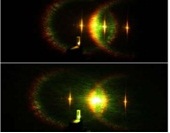
Vacuum-ultraviolet(VUV) lasers below 200 nm attract substantial interest for their promising applications. Our research has focus on the theory, growth, property and application of nonlinear optical fluoride crystals.Through the studies of theoretical calculation, crystal growth and measurement, several potential crystals will bechosen to realize the radiation in VUV region, especially below 160nm. The fabrication of VUV all solid-state lasers will also be studied.
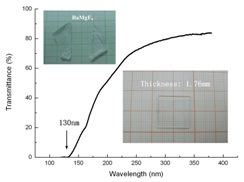
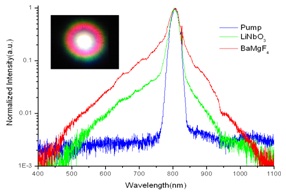
To establish the practical thousand-kilometer quantum communication network, the technology of quantum distribution and quantum repeater has to satisfy these conditions,high repetition frequency, wide bandwidth and low loss. Among them, the quantum interfaceof optical interconnect based on nonlinear-frequency- transform plays the most significant role. We will improve the technology of nonlinear-frequency- transform to realize the free switch in wavelength between the C-band (transmission) and near-infrared band (quantum memory). Exploring the technology of frequency-transform in Wavelength Division Multiplexing, is of great potential value in speeding up the quantum communication rate.
Optofluidics, which is defined as the new branch of engineering science by the combination of integrated optics and microfluidics, has its distinctive properties in compartmentalizing and performing typical laboratory operations in a nano- and picoliter volume droplets. Due to the attractive features of optofluidic elements including smooth liquid–liquid interface, real-time tunability and easy integration compared with traditional solid-state systems, as well as the fusion of optofluidics and droplet microfluidics, we make the devices which are small in size, lower power consumption and integratable. Plus, we explore its new applications in micro total analysis systems, utilizing the optical method to monitor the fluid flow behavior on the microfluidic chip.
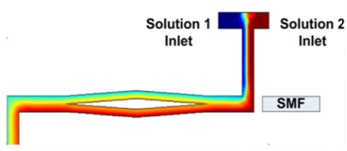
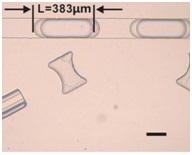
The exploitation of the unique properties and various applications of TiO2 nanotubes hold great promise for the achievement of major breakthroughs in the fields of solar cells, photocatalytic degradation, photoelectrolysis of water and so on. Among various synthesis methods, electrochemical adonizationcan control the growth accurately so that we can design and prepare novel structure of TiO2 which will have unique optical characteristics with multi-functionalities.TiO2 nanotube with periodical structures can be realized by applying specific pulsed current in electrochemical adonization process, which makes it a promising candidate as photonic crystal material. In addition, the nanotube showsdifferent color and transparency owing to different periodical structures along the axis direction. Free-standing nanotube membrane of quality in the oxidation atmosphere for high temperature crystallization can enhance the crystallization of nanotubes, decrease the number of electron trap mode and increase the electron transmission speed. This new kind of TiO2 nanotube can realize the control of photons andphotoelectronics in nanoscale and plays an important role in energy photonic applications such as dye-sensitized solar cells and photocatalytic degradation.
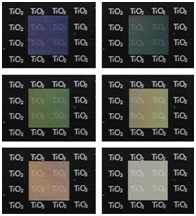
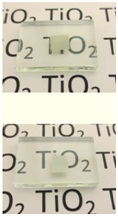
Nanotubes photonic crystal transparent film High crystallinity nanotube electrodes
Atmospheric pressure microplasmas are often characterized as non-equilibrium plasmas, i.e. the electron temperature of plasma is larger than the ion temperature, and the ion temperature is larger than gas temperature. As far as the electrons for concern, they are often not in equilibrium state and their energy distribution can not be described by Maxwell equation. Due to its nonequilibrium state and being full of active radicals and heat radiation, UV radiation, atmospheric pressure microplasma has potential application in chemical analytics, biomedicine, display and nanotechnology. Compared with the low pressure plasma applied in semiconductor industry, the advantage of atmospheric pressure microplasma is no need of vacuum system and capable of integration and portability. Nevertheless, it is still a big challenge to get a nonequlibriummicroplasma with controllable plasma density and temperature, which mostly depends on our understanding of the thermodynamics and the nonlinear properities of microplasma. In recent years, our research are more concentrated on the thermodynamics, instability and nonlinear pattern formation of microplasma.
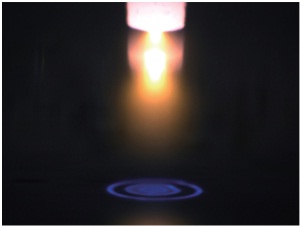
concentric-ring pattern observed in the helium micro discharge
PAtmospheric pressure microplasma is good tool to treat the liquid sample and assist liquid phase chemical reaction. It is not difficult to predict that the electrochemical and the fluid dynamical effect at plasma-liquid boundaries open new frontier in electrochemistry, plasma science, hydrodynamics, and biomedicine. Nevertheless, the interaction mechanism of plasma and liquid is an almost unexplored field. The details of the coupling between plasma and liquid dynamics represent an exciting new direction in the plasma science.
Fluorescent carbon dots exhibit great potential in bioimaging and biosensing due to their biocompatible and superior optical properties. Based on the interaction between plasma and liquid, carbon dots with blue photoluminescence has been synthesized in our group recently. However, tailor-made control of the optical properties of carbon dots is extremely challenging. Our research aim to understand and elucidate many processes in plasma-surface interaction by investigating the synthesis of carbon dots with tunable photoluminescence wavelength (from 400 -700 nm).
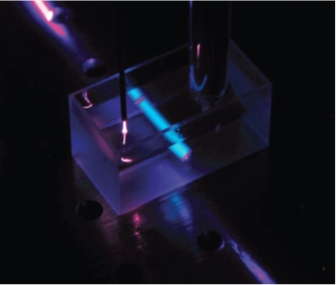
Investigation of quasi-phase-matching nonlinear optics and its applications in designing and demonstrating some key photonic devices needed in all-optical signal processing, such as temporal cloaking, all-optical wavelength converter, optical buffer, multiple wavelengths lasers with variable wavelength spacing, and logic gates etc
Other interests:Slow and fast light techniques and their applications;Optical and nonlinear optical materials;Laser-material interactions; Femtosecond laser technology and applications;Micro- and nano- structuring of optical and nonlinear optical materials;
Nanophptonics study the light-matter interaction at the nanoscales, which have potential applications in the further miniaturization and integrations of photonic devices. Our research interests are: metal or graphene-based surface plasmonic polaritons; nonlinear optics effect and their enhancement at the nanoscales; unidirectional surface states in the topological photonic insulators; THz waveguides.
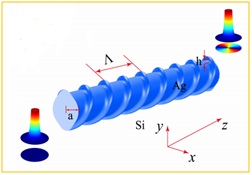
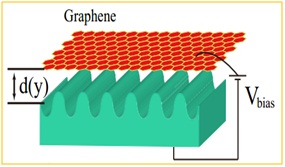
Progresses in solid-states physics frequently bring new opportunity to obptics, and the highly controllability and visibility of the optical experiments also provides a unique way to study concepts of solid-state physics. We have recently generalized the two concepts from condensate physics, namely, Anderson localization and Parity-time symmetry to optics, We have confirmed the survivals of these two concepts in the framework of Maxwell equations, and found their new physics due to the vector- and nonparaxial- natures of the light waves.
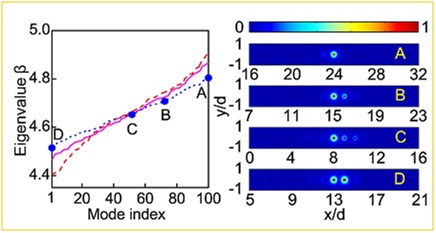
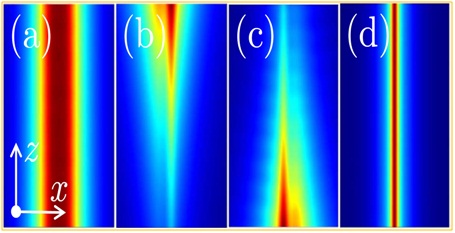
Nonlinear Spatial optics focuses on the controlling the spatial behaviors of light with nonlinear optics effects, such as the size and orientation of the light pattern, propagating directions, light-light interactions etc. Nonlinear spatial optics holds promising applications in all-optical routing and switching.


Nonlinear Nanophotonics lab‘s main research lays on fundamental studies of optics at nano-scale, from basic physics problems to practical applications. We aim to attack some key problems by touching the fundamental physical limits, including but not limited to nonlinear optics , nanophotonics,quantum optics and plasmonics. Related applications include: (1) super-resolution microscopy (2) optical microcavity (3) random laser (4) nonlinear plasmonics (5) entangled photon for quantum communication.
Ultraviolet (UV) photochemical oxidation technique and its application in graphene industrialization
We devote to developing a unique UV photochemical oxidation technique and exploring its potential application in graphene industrialization via surface modification. In the last few years, our work team, as a pioneer, has successfully developed three different UV/ozone vacuum systems, and this is propelling study in nanophotonics and optoelectronics of graphene.
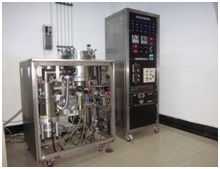

Three self-developed UV photochemical oxidation vacuum systems.
We are aiming for realizing photoluminescence in large-area few-layer graphene films by UV photochemical oxidation and electrical modulation. Some critical issues will be explored using high-resolution imaging technique, and this will shed light on our understanding of graphene based nanophotonics.
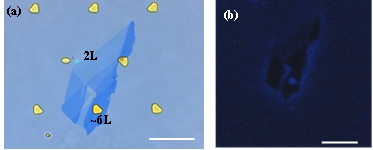
(a)A graphene flake and (b)its confocal optical image excited at 364 nm after UV/ozone oxidation.
(The bar is 20 μm.)
Graphene based flexible photodetectors are attracting tremendous attention. Our team is working in this field, aiming for realizing graphene based photodetectors owning high quantum efficiency and high responsivity.
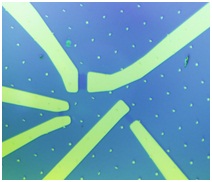
A unit of graphene based photodetector. (The square lattice constant is 10 μm.)